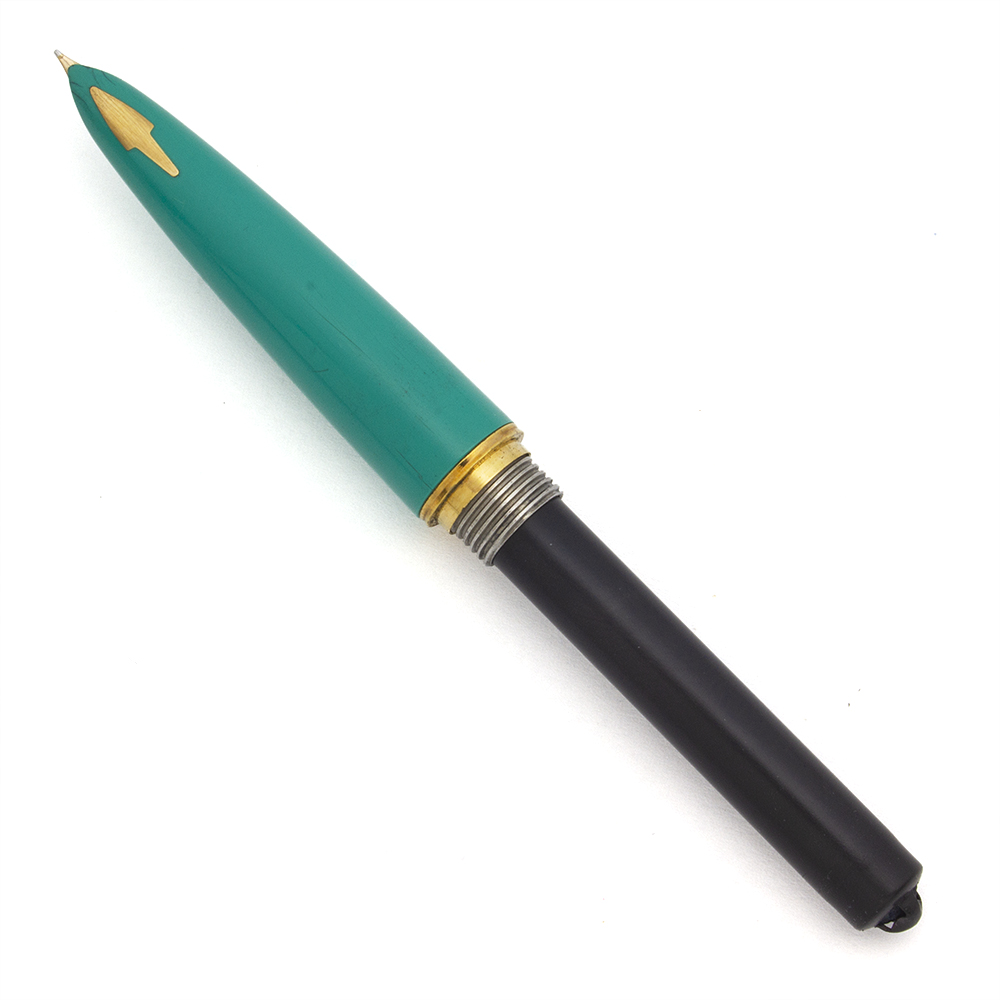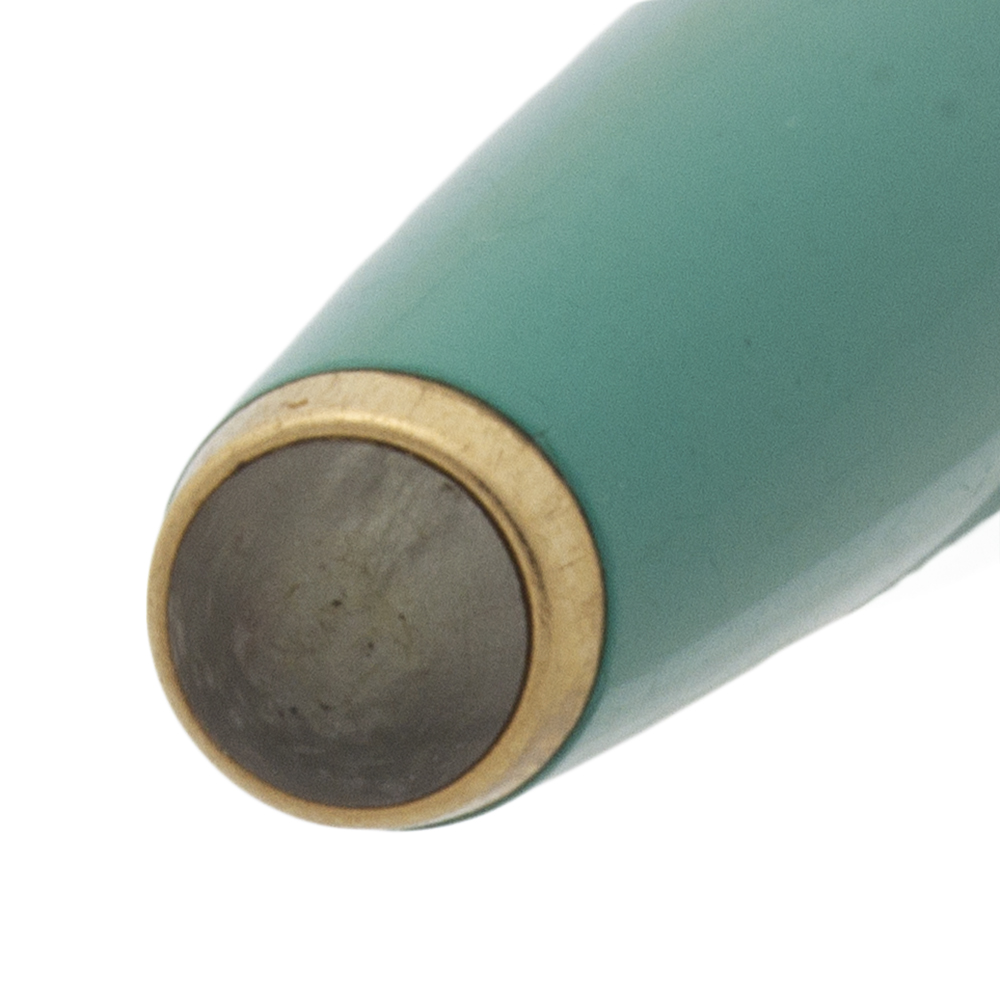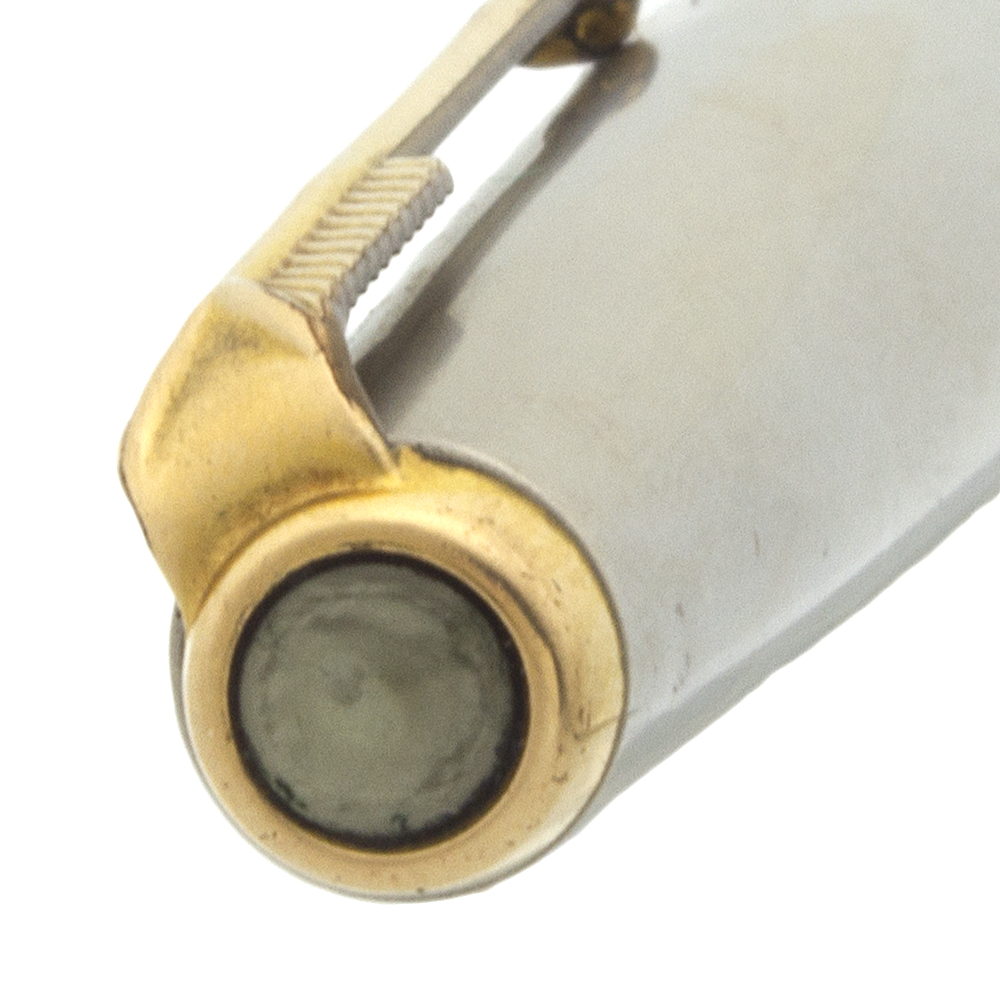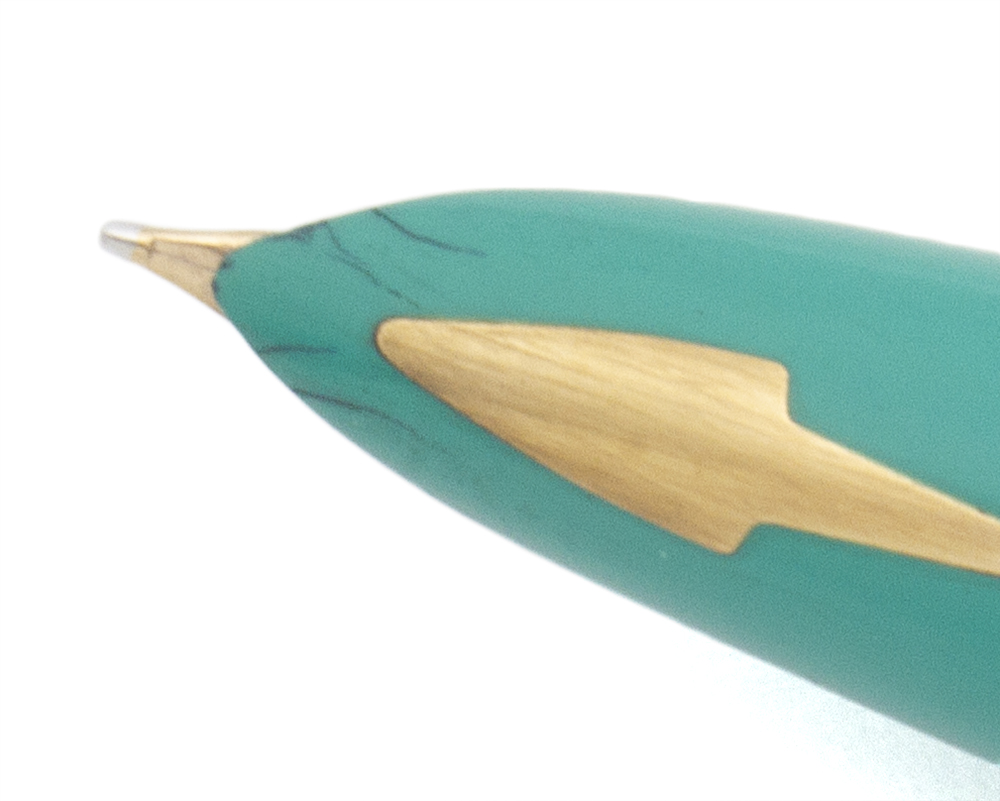Product Description
Type Fountain pen with unique filling system
Product Name Parker 61 Standard - Mark II, the "Standard" refers to the cap used. There is some contradictory information out there on the different versions but we are calling the Mark I the thin clutch ring version and the Mark II the thicker clutch ring version. (The Mark III would be the cartridge/converter version. The clutch ring is the band between the section and barrel.)
Manufacturer and Year Parker, USA -- 1962 - 69. (Parker produced this color from 1956 to 1982, and the Mark II capillary filling system pens were made between 1962 - 1969)
Length 5-1/2"
Filling System Capillary filling system which is unique to this model. Thoroughly cleaned and tested, filling system guaranteed. See further details below.
Color Vista Blue, a slightly green, bright blue body with the Standard Lustraloy cap and with gold plated clip and clip band. Each end of the pen has a pearlescent jewel inset.
Nib FINE gold nib.
Condition Excellent condition with no dents or dings. This is a vividly and beautifully colored pen with a shiny and silky cap in a classic design pattern. The section has four thin cracks on the tip of the hood and long, but these should not worsen with normal writing, so if you have a heavy hand perhaps this is not the pen for you. The cap and barrel have light to moderate scratching. The cap has a few shiny marks, most notable alongside the arrow end of the clip. The gold plated clip has plating wear along the edges of the arrow. The clip ring has pitting along the lower edge. The jewel at the end of the barrel has moderate scratching and it is dark. The imprints are clear.
You'll need to be patient when you fill it the pen for the first time, as it takes a few minutes or so for the capillary system to suck in enough ink to get started.
A word or two about the Parker 61 Capillary Filling System. If you are not familiar with this unique design, you should read this.
Here is how you fill a Parker 61, and an insight into how the pen actually works. Unscrew the barrel and stick the back end of the pen (aka the capillary cell) into a bottle of ink. Wait a few minutes (probably more like a half hour when you first start one of these older used ones), and let the ink wick up into the capillary cell. The cell contains a sheet of perforated plastic that has been given a 3-D pattern resembling tire tread, and rolled up. The perforations allow ink to seep between the rolled-up layers, and the tread pattern maintains space between the layers. In the middle of this tube, which runs the entire length of the capillary cell, is the feed. To keep things clean, the capillary cell has a coating of teflon on the outside that is intended to shed ink as the user withdraws the pen from the ink bottle, leaving very little ink to be wiped off. The end of the barrel contains a spring-loaded piece which covers the open end of the capillary tube, but still allows it to vent.










